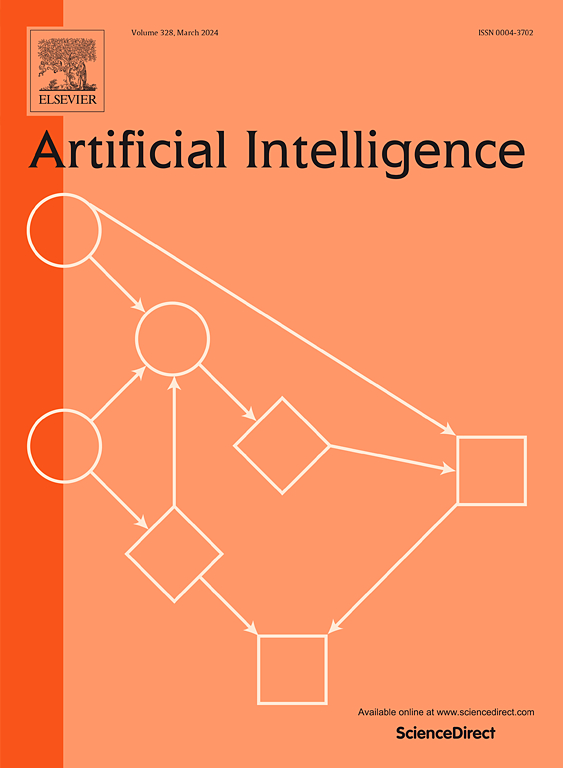Optimal bailouts and strategic debt forgiveness in financial networks
IF 4.6
2区 计算机科学
Q1 COMPUTER SCIENCE, ARTIFICIAL INTELLIGENCE
引用次数: 0
Abstract
A financial system is represented by a network, where nodes correspond to banks, and directed labeled edges correspond to debt contracts between banks. Once a payment schedule has been defined, the liquidity of the system is defined as the sum of total payments made in the network. Maximizing systemic liquidity is a natural objective of any financial authority, so, we study the setting where the financial authority offers bailout money to some bank(s) or forgives the debts of others in order to help them avoid costs related to default, and, hence, maximize liquidity. We investigate the approximation ratio provided by the greedy bailout policy compared to the optimal one, and we study the computational hardness of finding the optimal debt-removal and budget-constrained optimal bailout policy, respectively.
We also study financial systems from a game-theoretic standpoint. We observe that the removal of some incoming debt might be in the best interest of a bank, if that helps one of its borrowers remain solvent and avoid costs related to default. Assuming that a bank's well-being (i.e., utility) is aligned with the incoming payments they receive from the network, we define and analyze a game among banks who want to maximize their utility by strategically giving up some incoming payments. In addition, we extend the previous game by considering bailout payments. After formally defining the above games, we prove results about the existence and quality of pure Nash equilibria, as well as the computational complexity of finding such equilibria.
金融网络中的最优救助和战略性债务减免
金融系统由网络表示,其中节点对应于银行,有方向标记的边对应于银行之间的债务合同。一旦支付计划被定义,系统的流动性就被定义为网络中所有支付的总和。最大化系统流动性是任何金融当局的自然目标,因此,我们研究了金融当局向一些银行提供救助资金或免除其他银行债务的设置,以帮助他们避免与违约相关的成本,从而最大化流动性。我们研究了贪婪救助政策与最优救助政策的近似比,并分别研究了寻找最优债务消除和预算约束的最优救助政策的计算硬度。我们也从博弈论的角度研究金融系统。我们观察到,去除一些即将到来的债务可能符合银行的最佳利益,如果这有助于其借款人之一保持偿付能力并避免与违约相关的成本。假设银行的福利(即效用)与他们从网络获得的收入一致,我们定义并分析了银行之间的博弈,这些银行希望通过战略性地放弃一些收入来最大化他们的效用。此外,我们通过考虑救助款项来延长之前的游戏。在正式定义了上述对策后,我们证明了纯纳什均衡的存在性和质量,以及寻找这种均衡的计算复杂度。
本文章由计算机程序翻译,如有差异,请以英文原文为准。
求助全文
约1分钟内获得全文
求助全文
来源期刊

Artificial Intelligence
工程技术-计算机:人工智能
CiteScore
11.20
自引率
1.40%
发文量
118
审稿时长
8 months
期刊介绍:
The Journal of Artificial Intelligence (AIJ) welcomes papers covering a broad spectrum of AI topics, including cognition, automated reasoning, computer vision, machine learning, and more. Papers should demonstrate advancements in AI and propose innovative approaches to AI problems. Additionally, the journal accepts papers describing AI applications, focusing on how new methods enhance performance rather than reiterating conventional approaches. In addition to regular papers, AIJ also accepts Research Notes, Research Field Reviews, Position Papers, Book Reviews, and summary papers on AI challenges and competitions.
 求助内容:
求助内容: 应助结果提醒方式:
应助结果提醒方式:


